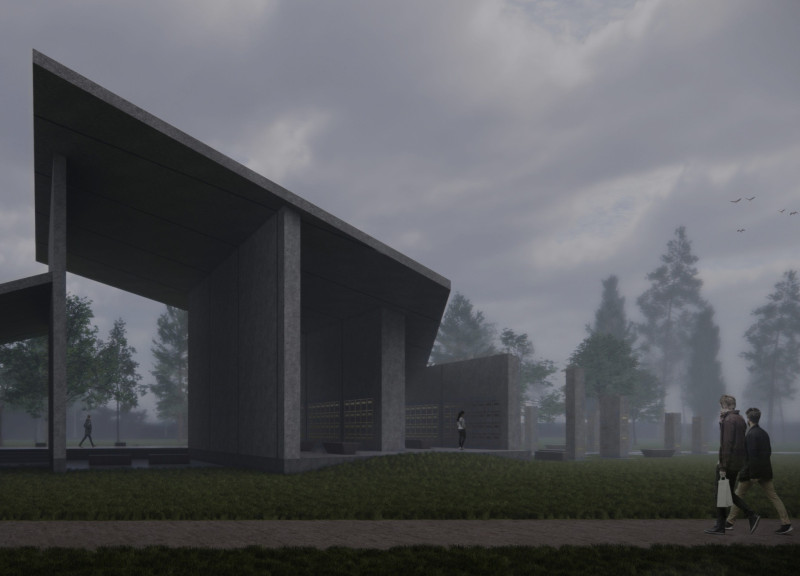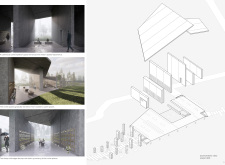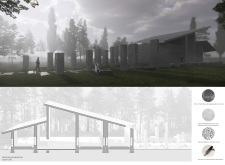5 key facts about this project
Sidrabina laivinā, known as The Silver Boat, is a columbarium located in the Forest Cemetery of Riga, Latvia. It is designed to facilitate collective remembrance, exploring the relationship between memory and presence. The design concept focuses on blending permanence with transience. The building draws inspiration from the symbolist paintings of Rūdolfs Pērle, resulting in a sculptural form that interacts meaningfully with the surrounding landscape. The architecture engages visitors emotionally, providing a space for reflection and contemplation.
Architectural Form
The building features large openings that allow natural light to fill the internal spaces. This design choice connects visitors visually with the sky. The flow of light creates an ever-changing atmosphere inside, influenced by the time of day. Significant walls hold embedded niches for the deceased, reminding visitors of the bond between the living and those who have passed. Without physical doors, the entryway encourages an easy movement between the interior and exterior, reinforcing the connection to the surrounding environment.
Spatial Organization
The layout incorporates a linear path that guides visitors from existing cemetery pathways to the central contemplation area. This organization aims to enhance the experience by blending the built environment with nature. As visitors progress, they transition into a spacious contemplation area. The ceiling height rises, emphasizing the importance of this space. The sharp edges of the roof break from typical forms found in memorial architecture, inviting interaction with the structure.
Materiality and Details
Concrete with Recycled Concrete Aggregate serves as the main material, promoting sustainability while providing a solid presence that resonates with themes of remembrance. Bronze-colored stainless steel trims outline the niches and the names of the interred, contributing a minimal aspect that complements the overall design.
Shared recesses are placed at the base of the niches, allowing visitors to place candles and flowers. This detail encourages communal care and reflects Latvian traditions, enhancing the personal connection to the space.
Sidrabina laivinā offers a thoughtful approach to collective remembrance, characterized by its engaging form and organized spaces. The design enables natural light to guide visitors, creating an environment that honors both those who have passed and the living. Features like the arranged niches and the relationship to nature strengthen the impact of the experience, making it a meaningful place for reflection.






















































